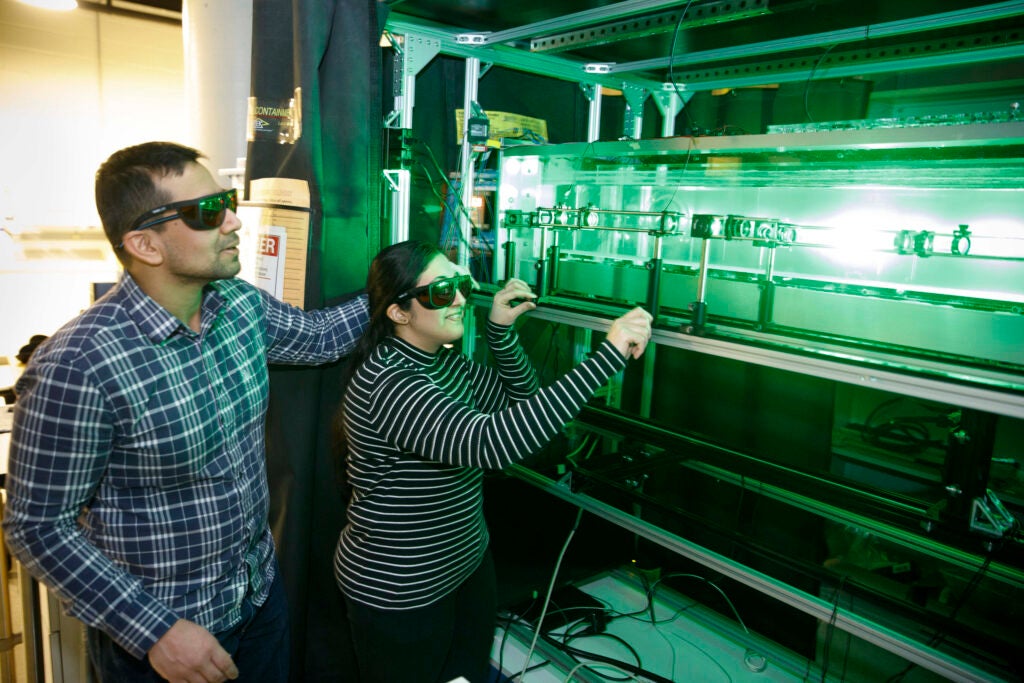Bird’s-eye view of energy conservation
Physics of V-shaped flight formations offer insights into how to improve efficiency of groups of drones, underwater vehicles
Birds have inspired human flight for centuries, but Shabnam Raayai thinks they can also offer lessons in reducing energy consumption.
A fellow at the Rowland Institute at Harvard, Raayai works to extract physics with practical applications from natural phenomena, whether flying birds or shark scales. Taking cues from the V-shaped flight formations of migratory birds, Raayai’s team has published new insight into how the flight of unmanned aerial vehicles, such as drones, could be designed to allow for longer life of power sources. The results would also be applicable to all kinds of collective movement through medium, from vehicles moving under water to how vegetation patches could be arranged for flood control.
Research into group-flight optimization isn’t new, but most such experiments have focused on fixed-wing aircraft, in which mechanical lift is generated by the shape of the wings, the researchers say. Less is known about “non-lifting” parts of vehicles, like the bodies of small propellered craft, which are becoming increasingly important in industrial and military settings. “What if our devices or vehicles don’t have fixed wings?” Raayai said. “How does the flow physics change?”

Prasoon Suchandra (left) and Shabnam Raayai used high-speed imaging to capture how different flight arrangements affected each object’s drag.
Kris Snibbe/Harvard Staff Photographer
Answering those questions required a creative experimental setup that took into consideration both measurement accuracy and cost effectiveness. Using a water tunnel and cylinders to represent vehicles in flight, the team employed a technique called particle-image velocimetry to measure the flow field around each object. A single laser and four intersecting sheets of light created a fully illuminated space, in which the researchers used high-speed imaging to capture how different arrangements affected each object’s drag. Since water and air are both Newtonian fluids, simple calculations allow for extrapolation to a variety of applications.
Among their observations: In one configuration, they found a 45 percent drag reduction for second-row members behind the leader, and some additional drag reduction benefit for the leader. Those benefits decreased as the angle of the V grew wider, according to the data.
Raayai stressed that the measurements are a baseline set of principles from which different researchers or industries could apply their own parameters for optimization. “Optimization has multiple paths, depending on what you want to do,” she said. “Do you want all of your seven members to use the same amount of battery between point A to point B? If that’s the case, you will have to figure out a way to switch members’ positions throughout your flight.”
Ultimately, Raayai wants to help carve a path toward decarbonization by offering new ways to reduce energy consumption and move toward electrification. And nature has a way of nudging her.
“A lot of animals choose to maneuver in groups, and that’s beneficial to them — the ones that walk, and the ones that swim or fly,” she said.
The Physics of Fluids paper, “Impact of bio-inspired V-formation on flow past arrangement of non-lifting objects ,” is co-authored by Rowland Institute postdoctoral fellow Prasoon Suchandra and is featured by the American Institute of Physics’ Scilight .




